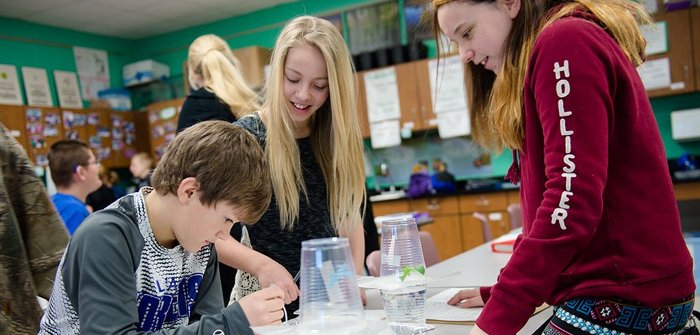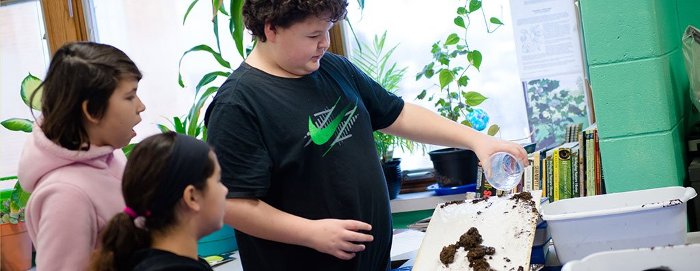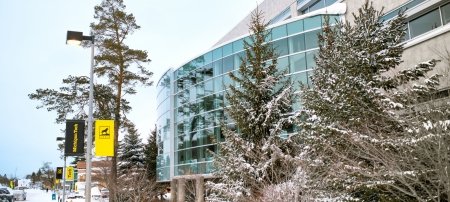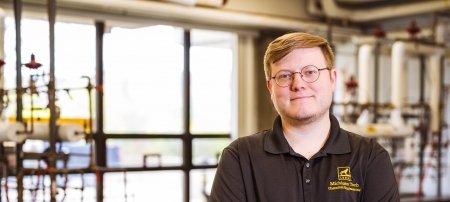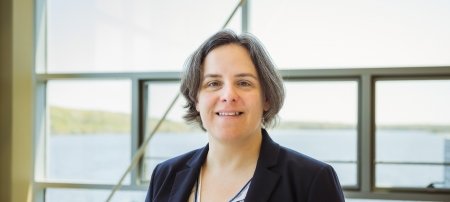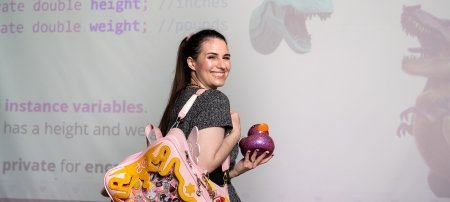Remember middle-school science class? Memorizing all those disconnected facts? Wondering what it had to do with your world or life?
Thanks to the vision of a few faculty members and staff at Michigan Tech, the commitment of universities, school districts, and middle-school teachers across the state, and a $5 million grant from the Herbert H. and Grace A. Dow Foundation, middle school science is starting to make more sense.
A project called Michigan Science Teaching and Assessment Reform (Mi-STAR) is developing a curriculum that engages students in applying science to real-world problems, while connecting science subjects around unifying themes: Cycles and Interrelationships for sixth graders, Life Cycles of Materials for those in seventh grade, and Human Impacts and Solutions for grade eight.
"Science is much more than a series of facts. It is a way of developing knowledge."Michigan Tech Provost Jackie Huntoon
It all began with the National Research Council's 2011 report, "Framework for K-12 Science Education." Essentially, that report warned, "We're not doing it the right way," explains Michigan Tech Provost Jackie Huntoon.
The National Research Council, the working arm of the National Academy of Sciences and the National Academy of Engineering, recommended that new science standards—and equally importantly, new ways of teaching science—be developed to enhance student appreciation for science, scientific knowledge, and science-related decision-making in their everyday lives. Each core scientific idea is paired with a practice that engages students in actually doing science and engineering, as well as a crosscutting concept that provides structures for scientific thinking across disciplines, such as "cause and effect" and "stability and change."
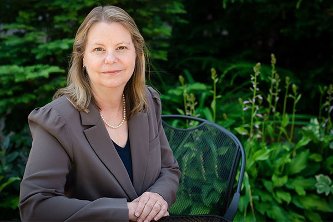
"That's the way scientists and engineers actually think about problems," Huntoon points out." Scientists are so enthusiastic about what we do because it is an exciting, creative activity," she says. Huntoon herself is a geologist. "Children in school need to experience science that way too."
Easy to say, harder to do.
Over the past year, 49 school teachers and 39 faculty members, researchers, and graduate students at five Michigan universities—Michigan Tech, Eastern Michigan, Grand Valley State, Saginaw Valley State, and Western Michigan—have been laying the foundation for the Mi-STAR curriculum.
Through a professional development component, Mi-STAR is providing training for teachers to develop and implement this new curriculum. To date, middle-school teachers from 29 schools in 18 school districts—from Detroit to the Upper Peninsula—have worked on the curriculum and learned to use it in their classrooms.
Research and assessment is another key piece, analyzing results and changing course when necessary.
Developing a reform-based curriculum is a monumental task, says PhD student and Mi-STAR curriculum developer Emily Gochis, who has taught in schools, served in the Peace Corps and participated in a variety of science-education programs at Michigan Tech. "Mi-STAR is a challenging project that puts all my previous skills to the test."
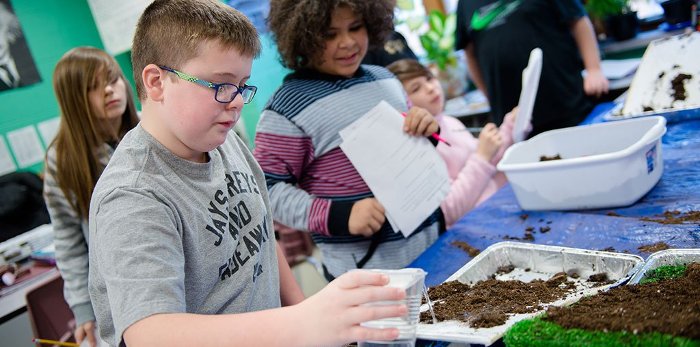
The team first identified overarching themes that are recognized by science and engineering professional societies as areas of particular concern to society. They include: water resources, energy and earth resources, sustainable ecosystems, earth and space systems, food and agriculture, human and public health, and infrastructure and the built environment.
The education experts and teachers then looked at how learning would progress from sixth through eighth grade, developing units that address issues actually facing society, such as renewable energy resources, climate change, and feeding the world.
Still they weren't done. They had to design activities that enabled children to learn by doing, observing, making predictions, and drawing conclusions.
Three units of the new curriculum are now being piloted in schools in Bay City, Houghton, L'Anse, Kalamazoo, and Midland.
"We interview teachers weekly, and their reports of student enthusiasm for this type of learning are inspiring," says Brenda Bergman, who is heading Mi-STAR's research component. "One teacher described her students as 'joyful' in science class."
The timing is perfect, since Michigan recently adopted its own state science standards, based on the Next Generation Science Standards that emerged from the NRC study.
"Everything came together at the right time," says Huntoon. "Maintaining alignment between the Michigan Science Standards and the Mi-STAR curriculum is important, because schools and school districts that adopt Mi-STAR can know that it meets state science standards and prepares students for high-stakes assessments."
How will Mi-STAR affect the science classrooms of the future?
"I think it's going to be a great model for classrooms nationwide," says Robin Allen, a sixth-grade teacher at one of the Mi-STAR pilot schools, Northeast Middle School in Midland."Mi-STAR has developed a curriculum that is interdisciplinary, high energy, authentic, problem-based and of high interest to students. The units are well thought out, and the flow of the lessons makes sense. "
Jennifer Martin teaches sixth, seventh and eighth grade science at L'Anse Junior High School in L'Anse, MI. She's excited about the Mi-STAR unit she is piloting with her sixth graders.
"In a traditional classroom, the teacher tells the students what they should know and then they make observations," Martin explains. "Mi-STAR turns that upside down, starting with students making observations and discussing those observations with their classmates, then developing predictions and collecting their own data to test those predictions."
"One teacher described her students as 'joyful' in science class."
For example, in a unit on Michigan's changing ecosystems, students were doing an experiment focusing on the resources a population needs to survive. So they filled bottles with differing proportions of water, apple juice and yeast. Since yeast needs sugar to reproduce, the students predicted that the bottles with the most apple juice would see more yeast growth.
They found out if the yeast was growing by measuring the turbidity or cloudiness of the solution.
"Throughout the next few days, students were constantly checking their bottles and making observations," says Martin. "They collected their data (turbidity), graphed their results and analyzed the class data."
"Mi-STAR involves students more directly in their own learning," Martin points out. "We still have our bottles with our yeast/apple juice solutions; the students begged me to leave them for a few more days so they could continue observing how they changed."
Like most solutions to complex problems, though, Mi-STAR could create a new challenge by solving an old one. If Mi-STAR works, engaging middle-schoolers in thinking like scientists and engineers—and Huntoon has every reason to think it can—"the expectations of our university students are going to change as they learn science in school in this new way," she says. "How do we change our university instruction so that it also is more aligned with doing science and engineering than sitting in a classroom learning about it?"
Michigan Technological University is a public research university founded in 1885 in Houghton, Michigan, and is home to more than 7,000 students from 55 countries around the world. Consistently ranked among the best universities in the country for return on investment, Michigan’s flagship technological university offers more than 120 undergraduate and graduate degree programs in science and technology, engineering, computing, forestry, business and economics, health professions, humanities, mathematics, social sciences, and the arts. The rural campus is situated just miles from Lake Superior in Michigan's Upper Peninsula, offering year-round opportunities for outdoor adventure.

